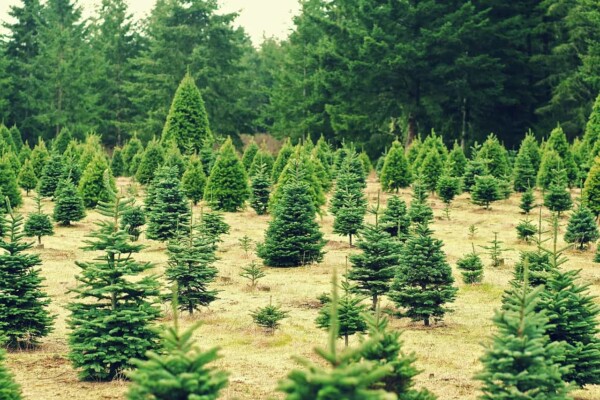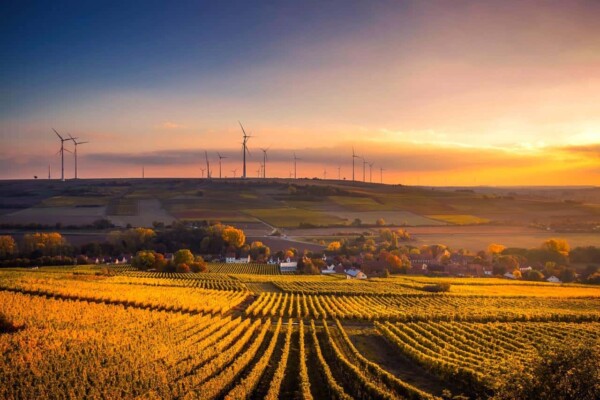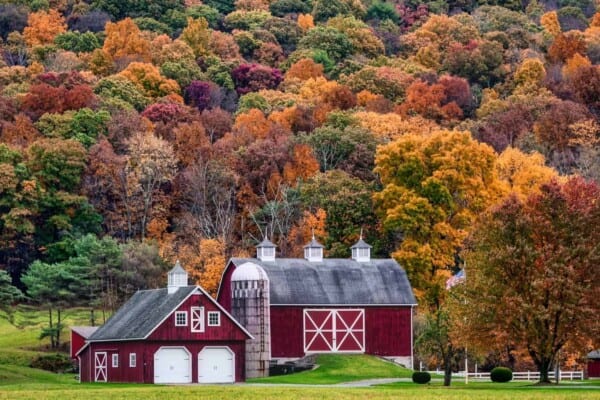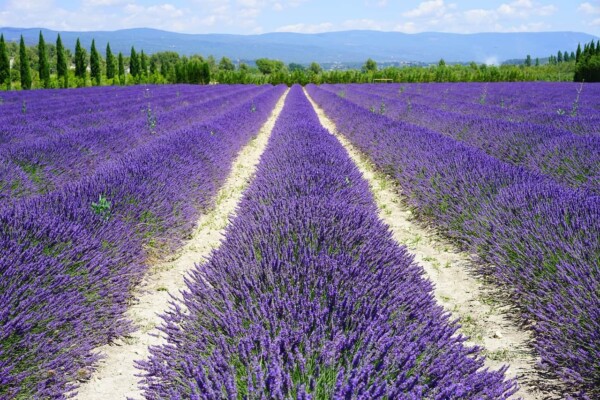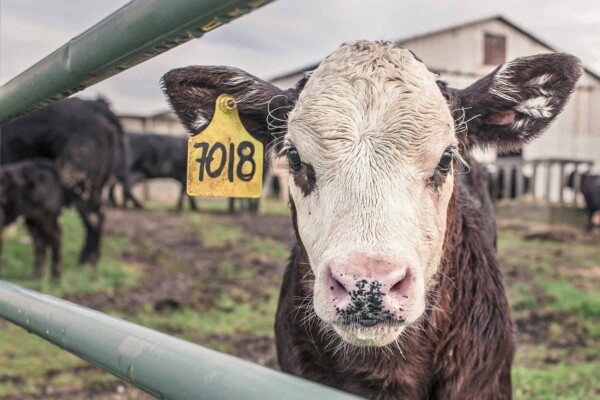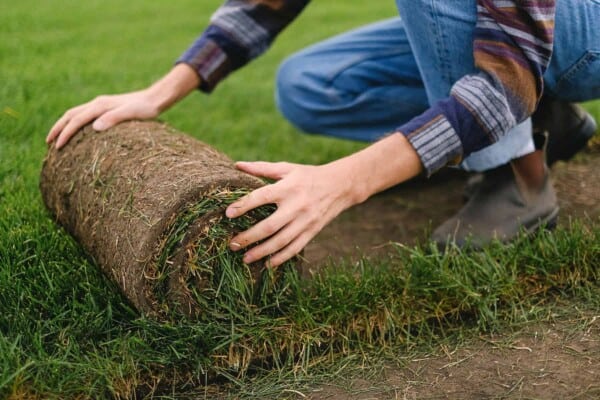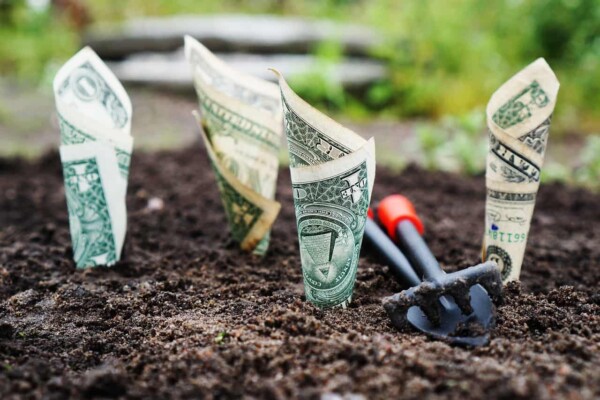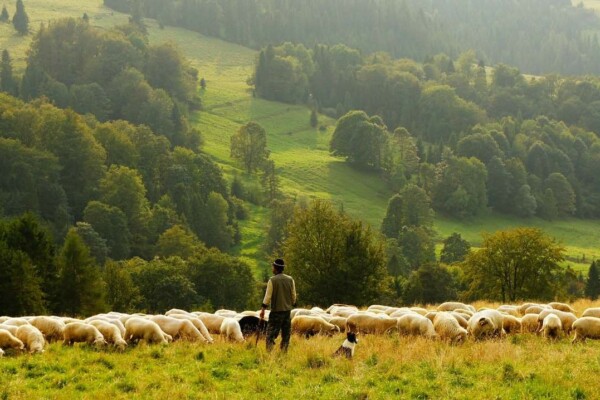There are plenty of absolutely delicious treats that you could get to reward yourself for getting the job done, but there aren’t many out there that can rival the truffle.
While many of us have gone through life without ever having tasted a truffle, it is actually considered to be a delicacy in Europe, to the point where people pay really egregious sums to get their hands on some high-quality truffles.
Many of you may be thinking “What’s so great about truffles, I just picked some up from Walmart and they’re not that good”. Well, to be fair, when we talk about truffles, we don’t talk about the chocolates that you can find at any local bakery around the town.
We are talking about the strange and unique looking fungus that grows in woods just like any other mushroom out there. This strange fungus is adored by many cultures around the globe, but as mentioned previously, it is especially beloved in Europe.
This is because before, in the not-so-distant past, these truffles could only be grown in certain areas which were created specifically for them.
Because of the limited number of truffles that you could get your hands on, it was considered to be a very rare delicacy and on top of that, actually getting your hands on truffles to grow for yourself was pretty much unheard of back in the day.
Luckily, this has changed by now as growing truffles has never been easier than it is today. It has even become a favorite pastime for many farmers around the United States to grow their own truffles right here on their land.
If you want to be one of these people, keep on reading because for the rest of this article we will give you all of the ins and outs when it comes to growing your own truffles.
So, let’s not dwindle about any longer and instead just hop on right into the meat of the subject:
What Are Truffles?
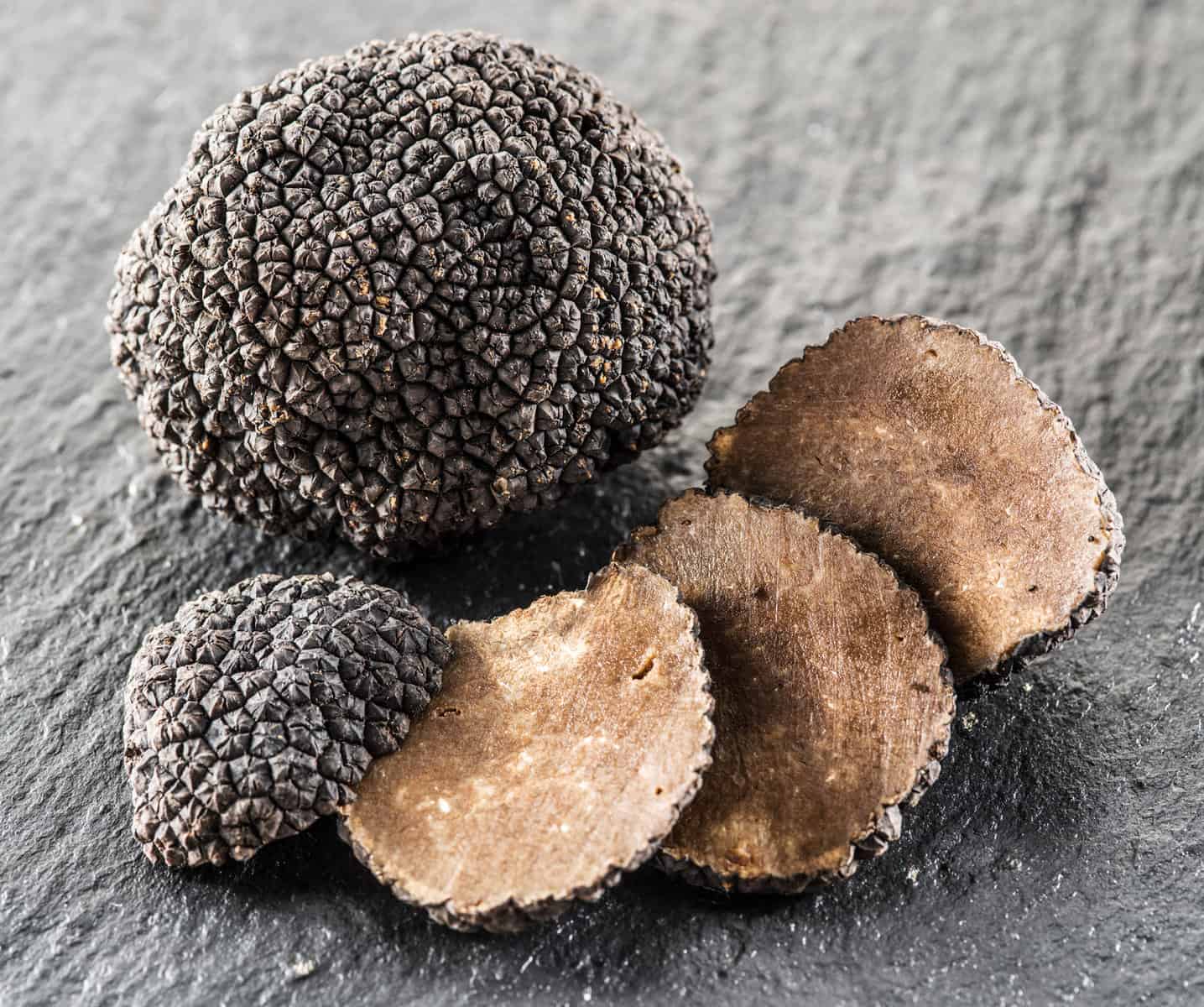
We previously stated the fact that truffles are basically just fungi that grow at the base of the trees in the forest. They grow in tandem with the roots of the trees and as such they help the trees grow bigger, while also taking advantage of the roots and helping themselves out too.
While you can find truffles all around the globe, let’s just say that there’s a reason as to why everyone still goes for European batches, and it’s not just because it’s what they did in the past.
Truffles that are grown in Europe are known to be a lot more flavorful and delicious than the ones from the United States or Australia for that matter, and as such, while more expensive, people still often times decide to opt for European truffles instead.
As far as which trees can actually be used as baselines for truffles, you pretty much have to choose one of the following:
- Birch
- Beech
- Hazel
- Hornbeam
- Pine
- Poplar
- Oak
Most of the time you will be producing black truffles. These black truffles are absolutely delicious and they are honestly well worth your time even if you only go for them.
White truffles on the other hand are a lot more unique as they could only be found in the Southern side of Europe for a very long time.
As such, the only people that were able to get their hands on white truffles back then were really wealthy people. Today, getting yourself just a simple pound of white truffles would have set you back a few thousand dollars, and when considering money inflation, let’s just say the numbers really do skyrocket to say the least.
The good thing about this though is that the rest of the world started to see the potential in growing their very own white truffles, and before long you could find yourself a batch in the US too, essentially driving the price down exponentially.
They are still quite expensive to come by when compared to any other fungi out there, but let’s just say that we can clearly tell why the price is this high, since the quality is just so astronomical to put it bluntly.
Types of Truffles

First and foremost, we have the Bianchetto, or what is commonly referred to as the “White Truffle’s Poor Relation”.
The reason for this strange nickname is the fact that it is often times mistaken for the white truffle because of its off-white exterior. The more you look at it though the easier it is to spot the differences between the two.
The Tuber albidum pico is nowhere near as fragrant as the white truffle though, which is why more often than not, uncovering one of these in the wild is definitely going to ruffle a lot of feathers.
Second of all we have the French Black Winter Truffle, quite possibly the second most famous type of truffle out there. You can usually find it growing up to two feet underground, especially so around oak trees and hazelnuts.
Most of the time you’ll find these around Australia, but since the demand for it never really halts, it’s safe to say that you can find it during most any season.
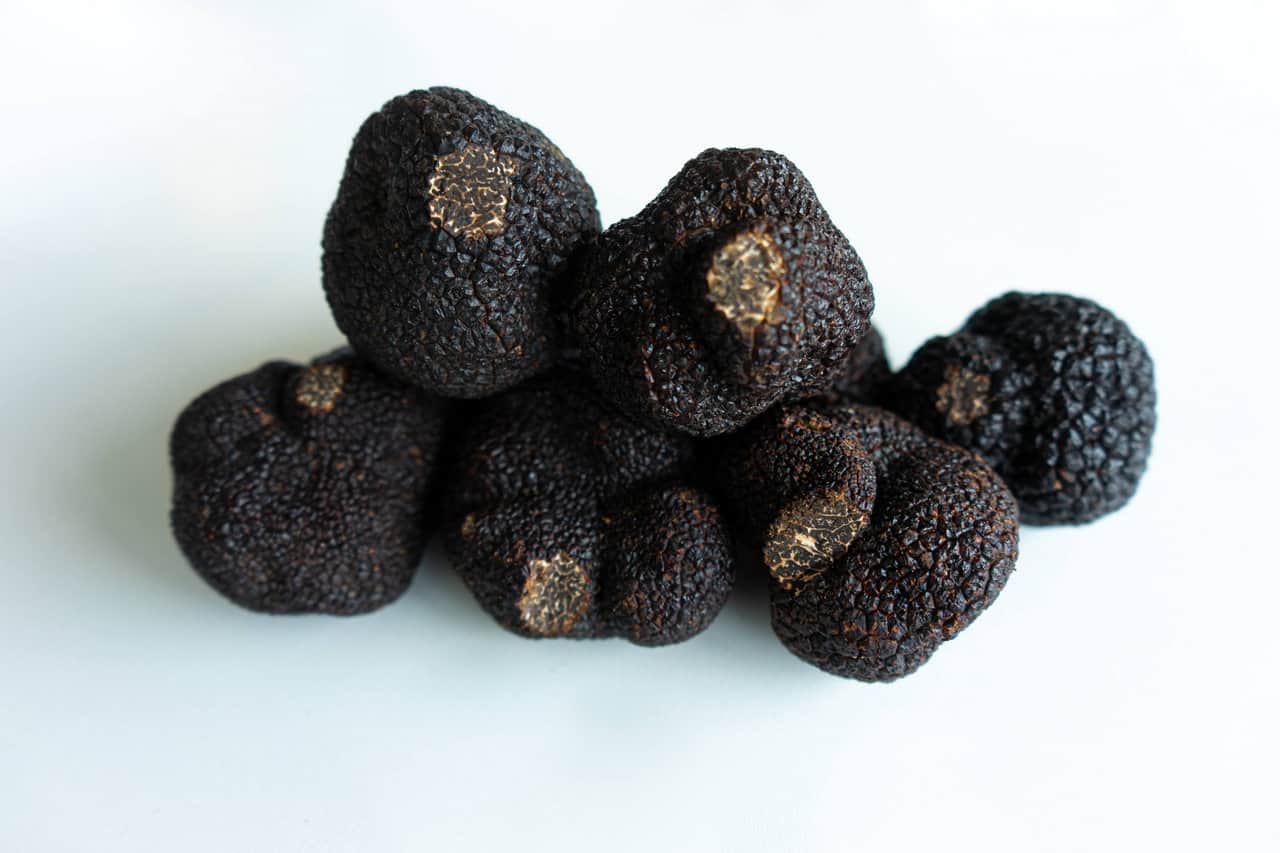
Third of all we have the Burgundy Truffle. This specific type of truffle can be found from September to December and while it may not be as popular as the previously mentioned types, it is one of the most marketed ones due to how good of a profit it can get you.
Last but not least we have the White Truffle, which, as we mentioned previously, is by far the most famous type of truffle there is out there. It is a wild truffle, meaning that you can’t actually grow it for yourself.
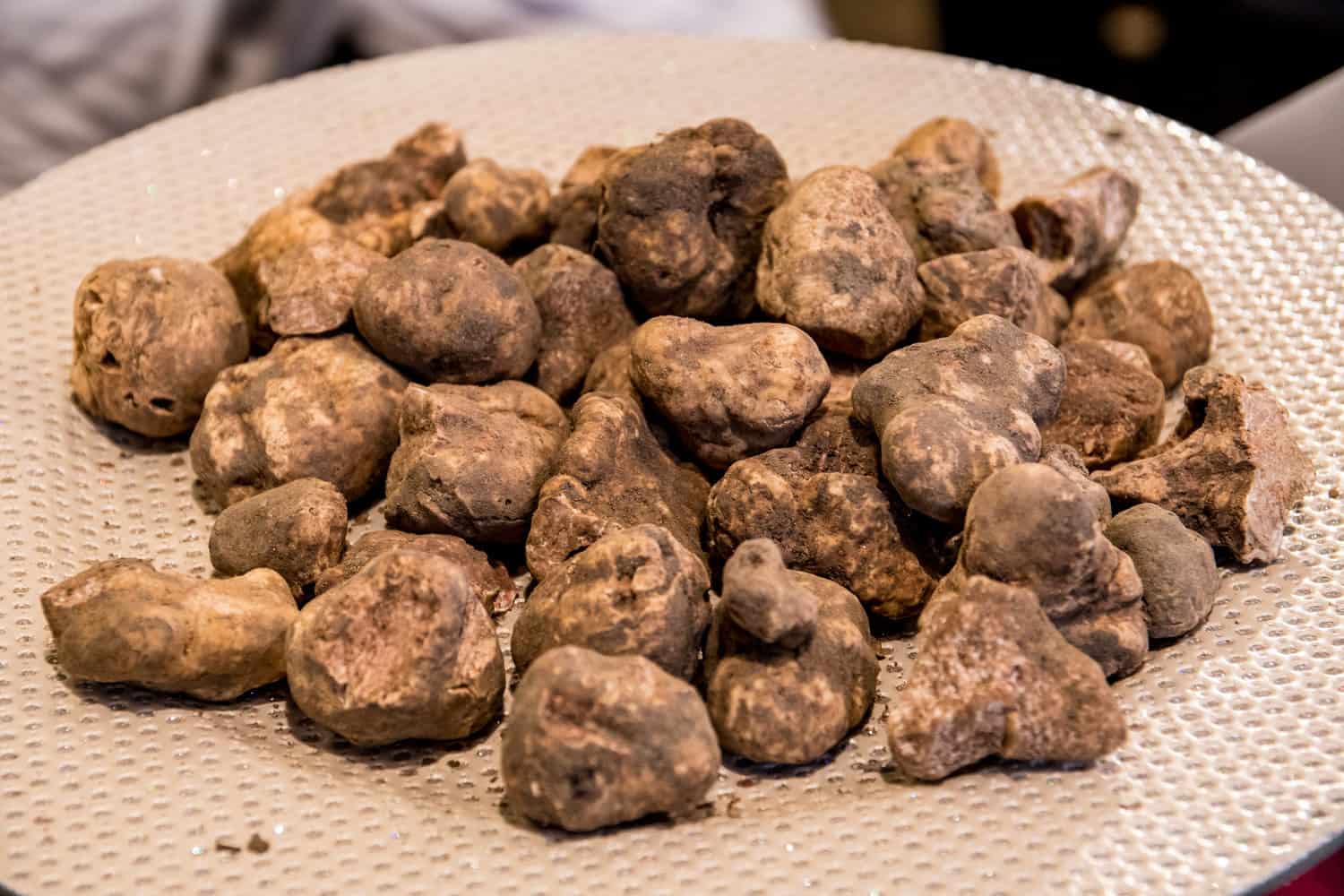
Most of the time, these are found in the wild by professional truffle hunters and their dogs as they’re the only ones capable of getting to their secret groves.
They are usually found around Italy, although as of late the number of truffles found in the wild has definitely decreased due to a lack of interest in it which is mostly because of the high price tag that the White Truffle demands.
You can also get your hands on multiple other truffle types that are specifically grown in the US. The majority of them are from the same subspecies as the ones we mentioned previously, although there are also a few other domestic varieties that you can find all across the US and Canada too.
How Are Truffles Grown?
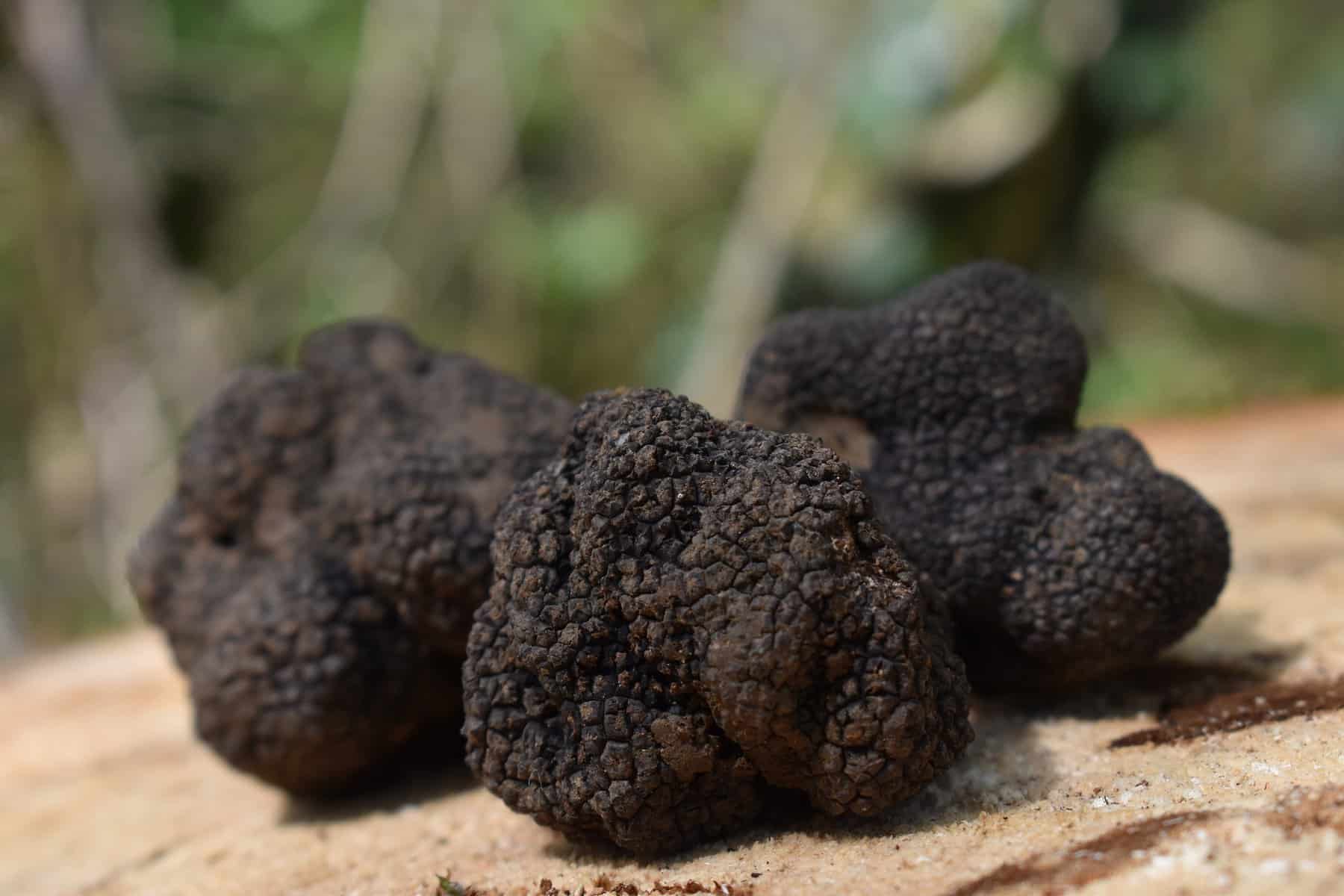
We have mentioned previously that truffles do grow under the soil, but what we didn’t mention is the fact that they are actually quite different from most any other mushrooms due to their unique method of spreading around.
Truffles actually take full advantage of their unique aroma in order to attract fungivores, or creatures that enjoy consuming them. After being eaten, their spores get to be spread all across their feces since they can’t get digested, and this is how they find their way to the next tree host they can work with.
This is a unique way of spreading around that we have not seen in any other plant or fungi out there. Most plants are known for being able to just convert the sunlight directly into energy through the process commonly referred to as photosynthesis.
Truffles on the other hand prefer to be fully dependent on the trees that they are attached to, working as one to feed each other.
In order to make sure that both of the parties here get something out of the deal, the truffle will help the tree by using its hyphae, thus reaching nutrients and water from pockets of soil that wouldn’t usually be available to the tree prior to the truffle’s arrival.
This is a very unique and beautiful symbiotic relationship which is known as mycorrhiza, and the saddest part about it is that without the tree, the truffle won’t be making it all that far into its life.
Step by Step Guide on How to Grow Truffles
In this segment we will take you through the ins and outs of growing your truffles, starting off with the most basic step of all:
Source a Truffle Tree
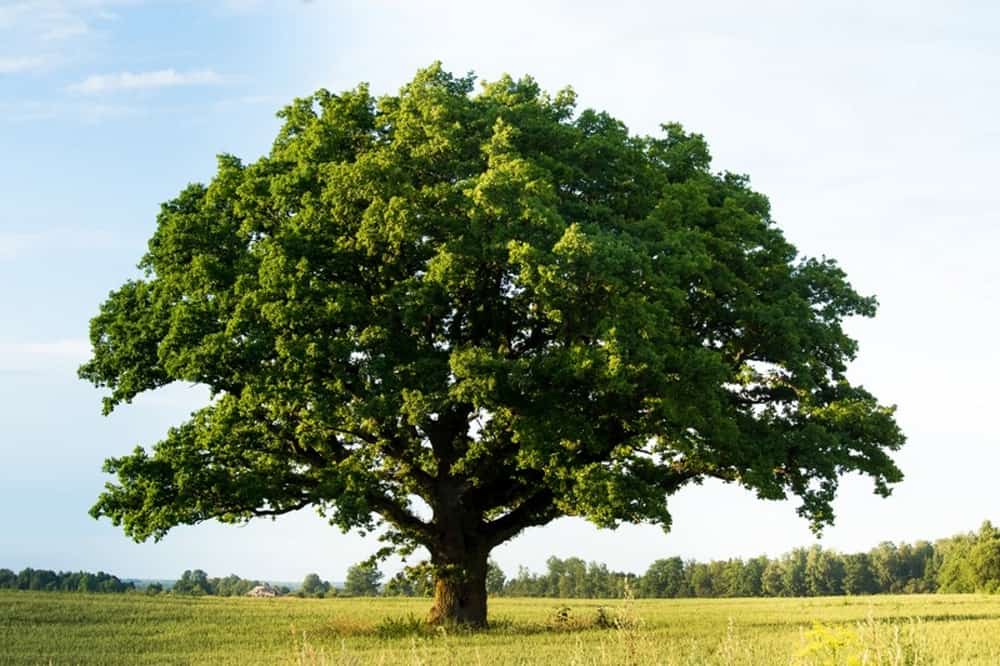
You should already know by now that truffles need a truffle tree to be able to grow, which is why they are so hard to find in the wild too.
You can plant your own tree though, for example you can plant a birch or a hazel tree in your back garden, but you need to keep in mind the fact that just because you’ve done it that doesn’t guarantee the fact that you’ll have truffles growing there the next day.
If you want to be absolute sure of the fact that your truffles are growing already, you will need to invest into a proper truffle tree, that’s actually a tree that already has been inoculated with plenty of truffle spores beforehand.
You can usually get your hands on one around any dedicated nurseries, although we do recommend that you invest in a more reputable grower so you don’t get scammed.
Prepare the Soil
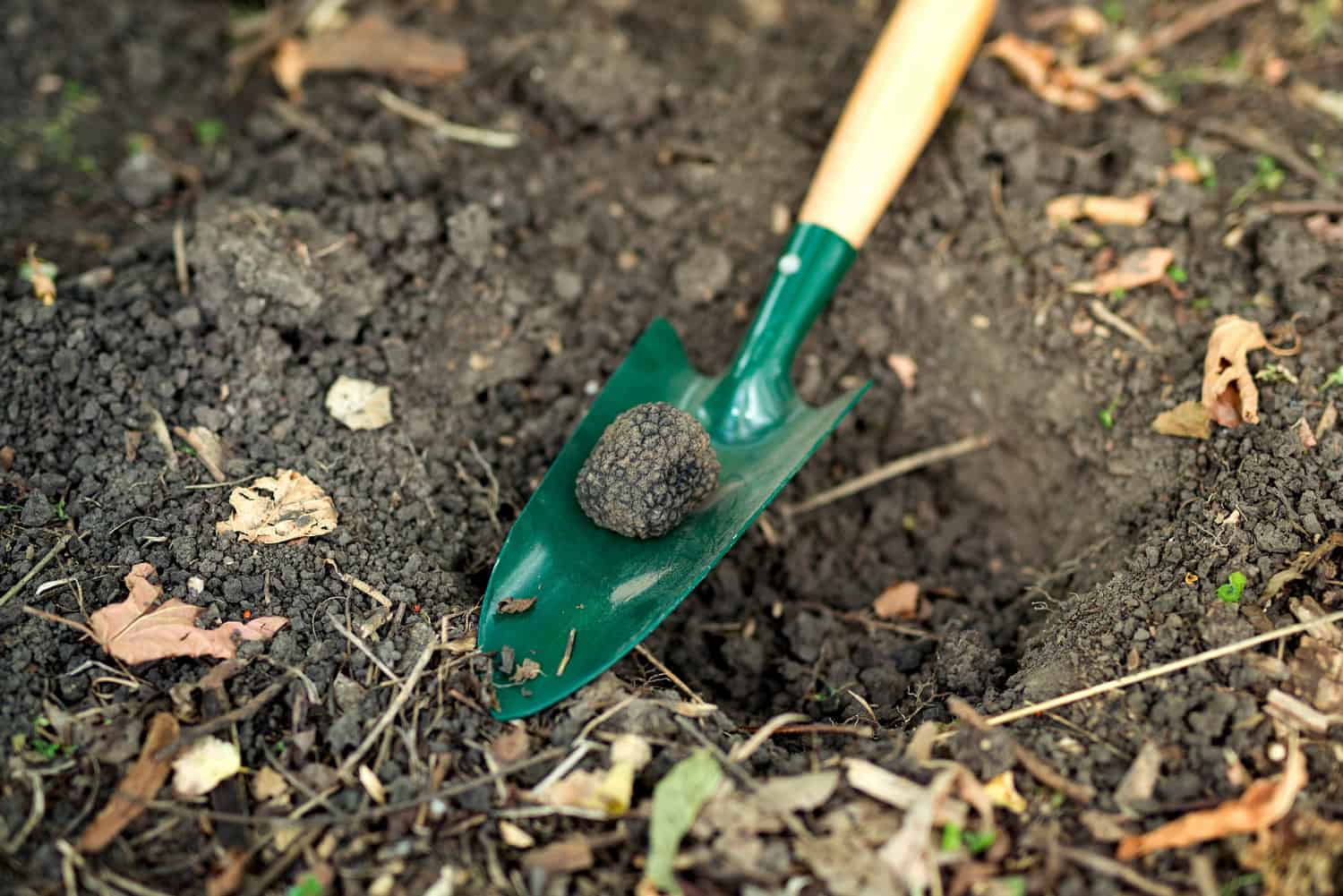
When it comes to the soil itself though, you will need to invest in alkaline and well-draining soil, because if the conditions are not perfect, you will not be able to get any truffles out of your hard work anytime soon.
On top of that you should also invest in soil with a pH level of around 7.5 to 8.3, because without this you won’t have anything to collect either.
You can always just test out your soil beforehand to make sure that the conditions are perfect for the job, or you can just plant the trees and then just let them grow until you get the right soil pH for them.
Plan An Irrigation System
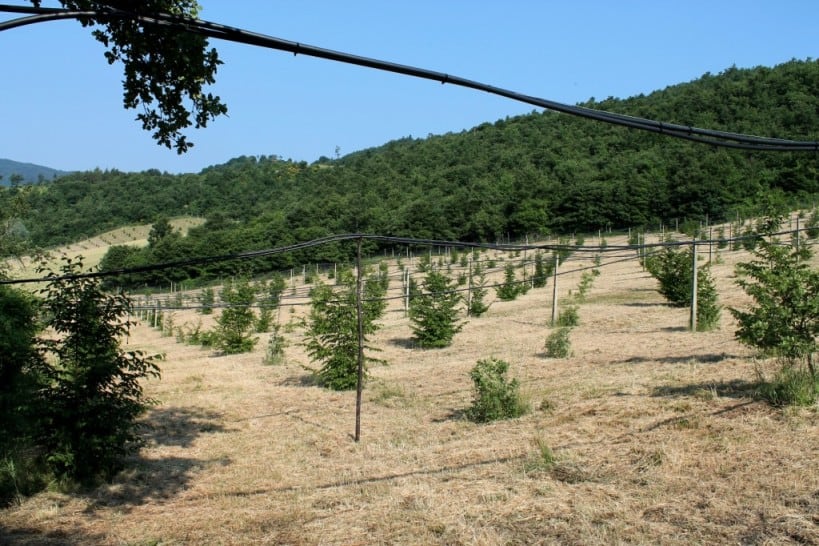
An irrigation system is definitely one of those things that you need to invest into if you want to make sure that your orchard is growing steadily.
Trees need as much as 1 inch of water attributed to them on a weekly basis, but the good thing about having a preset irrigation system is the fact that you can add more and more trees to your garden without having to actually worry about not watering them enough.
Plant and Grow the Tree
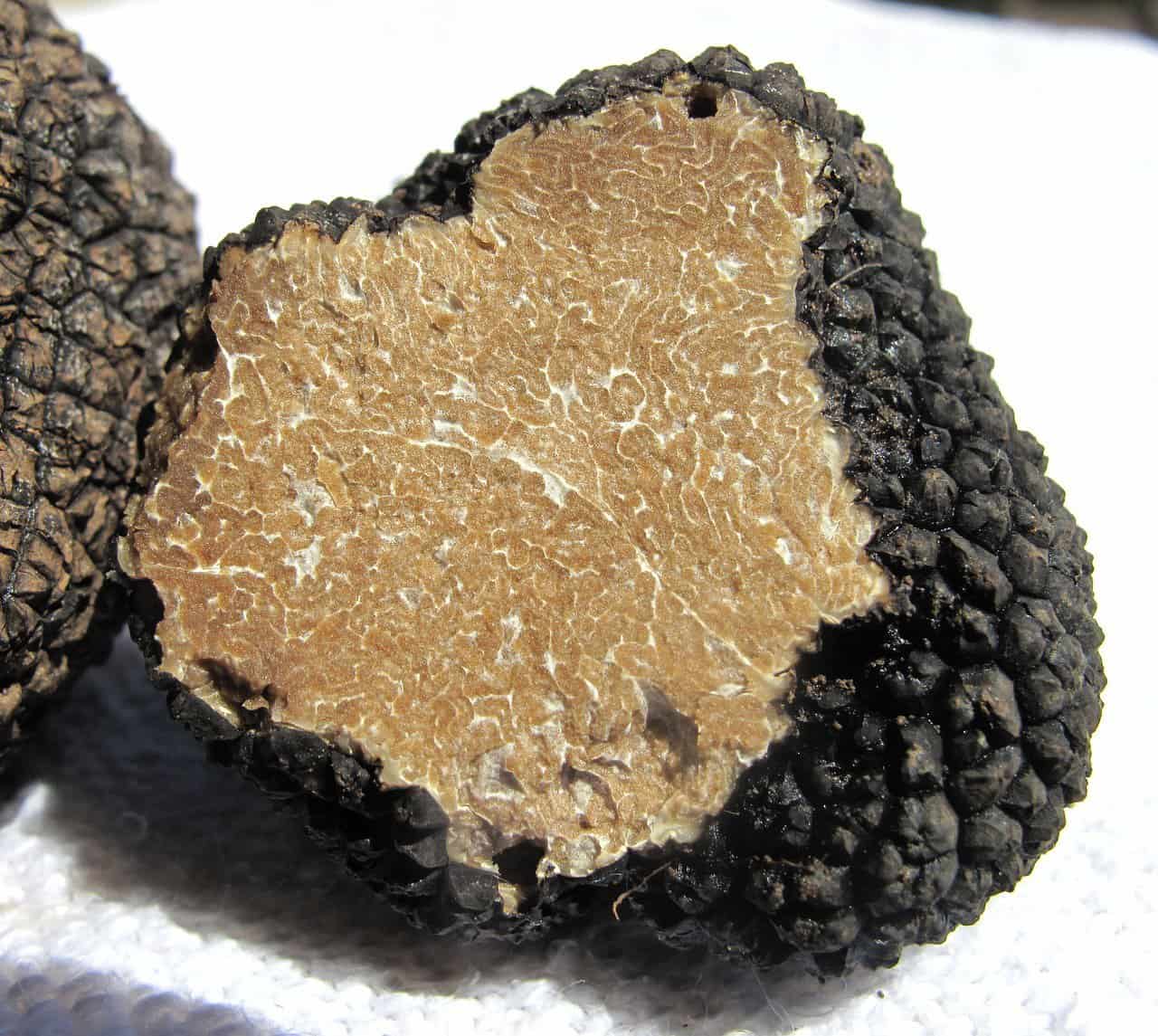
Now that the soil is ready and you’ve gotten your hands on that beautiful tree, you can instead start planting and growing it to get the results of your hard work.
So, how can you do this? Honestly, it’s the same as with any other tree out there, you just dig a hole and you plant the tree in it. Cover the hole as much as you can and then immediately after start watering it.
The next step is actually by far the hardest one that we can think of. Essentially, you should know by now that while truffles are exceptionally tasty and resilient, they are also sadly way slower when it comes to growing than both grass and weeds altogether.
As such, these can end up consuming all of the nutrients in the ground before the fungi can even get close to touching it.
As such, it is recommended that you spend a lot of your time just maintaining the area and better yet, just make sure that no grass or weeds are growing anywhere near your truffle tree.
You can always just apply some mulch around your tree as this will keep them as far away as possible, making your life easier.
From here on out just water the tree regularly and make sure that it has at least 1 inch of water available to it every week or so.
We recommend that you also add a little bit of lime to the mix so that your soil gets to maintain the pH levels and, while we do know that this part is quite annoying, now just wait for things to change.
Look for Growing Signs
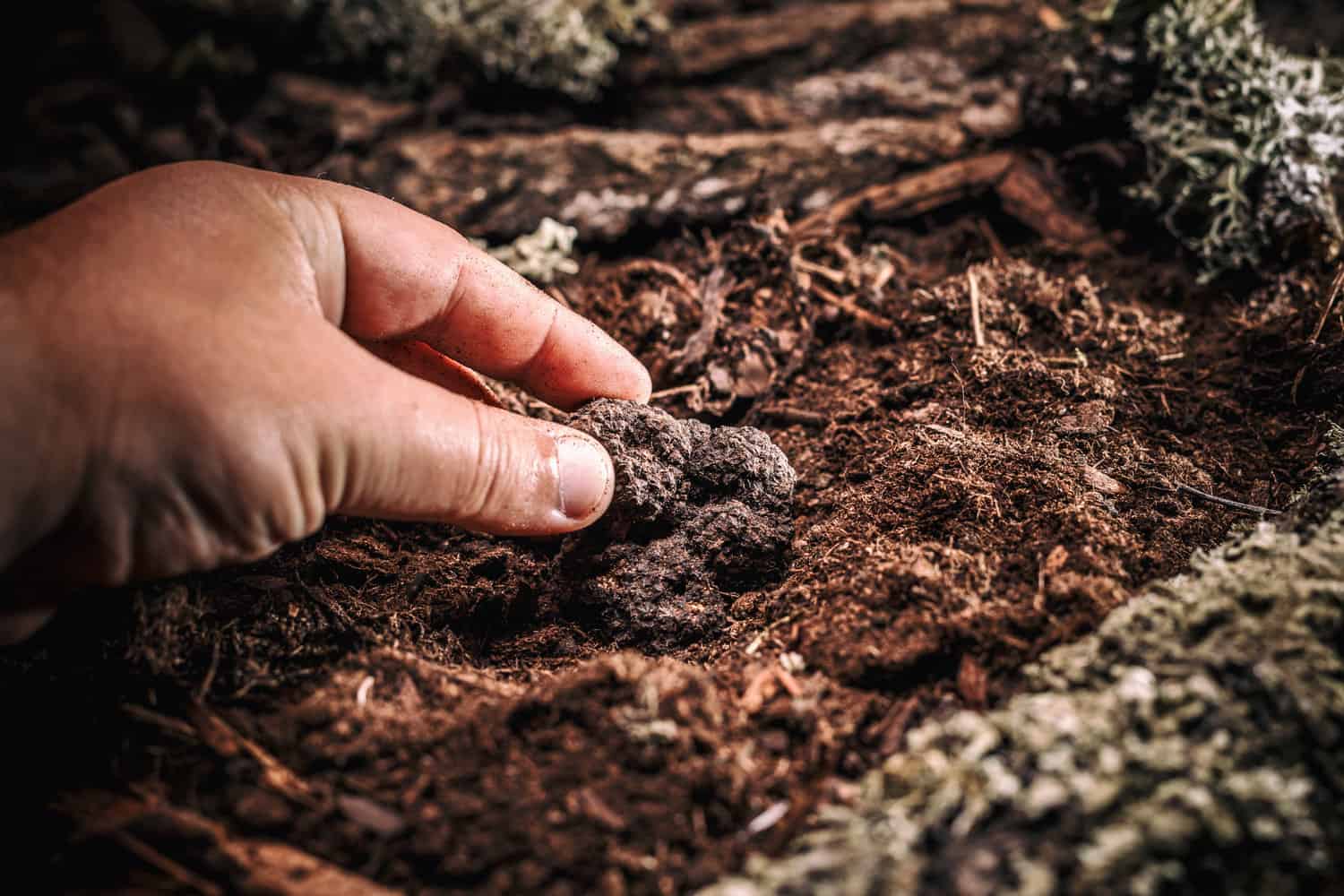
Now that you’re done with arguably the hardest part of the job, you should be able to see signs of the fact that your truffles are successfully growing in your garden already.
It’s been close to three years since you planted them so it’s understandable why you’d want to make sure that all of this hard work paid off, right?
Well in this case just check out the place around the tree as there shouldn’t be any grass or weeds anywhere near it. This is due to the fact that truffles release a natural herbicide which completely decimates anything it comes across, including both grass and weeds at the same time.
The appearance of moss and puffball can also be a very good sign that your truffles are growing, which is why you should keep a lookout for them at all times.
While these signs don’t necessarily mean that your truffles are ready to be harvested, they can be good indicators of the fact that you may be on the good path for now.
Harvest the Truffles

The actual harvesting part should take about five years or so, with the very first step of the job having taken place around five years before or so.
How to Harvest the Truffles
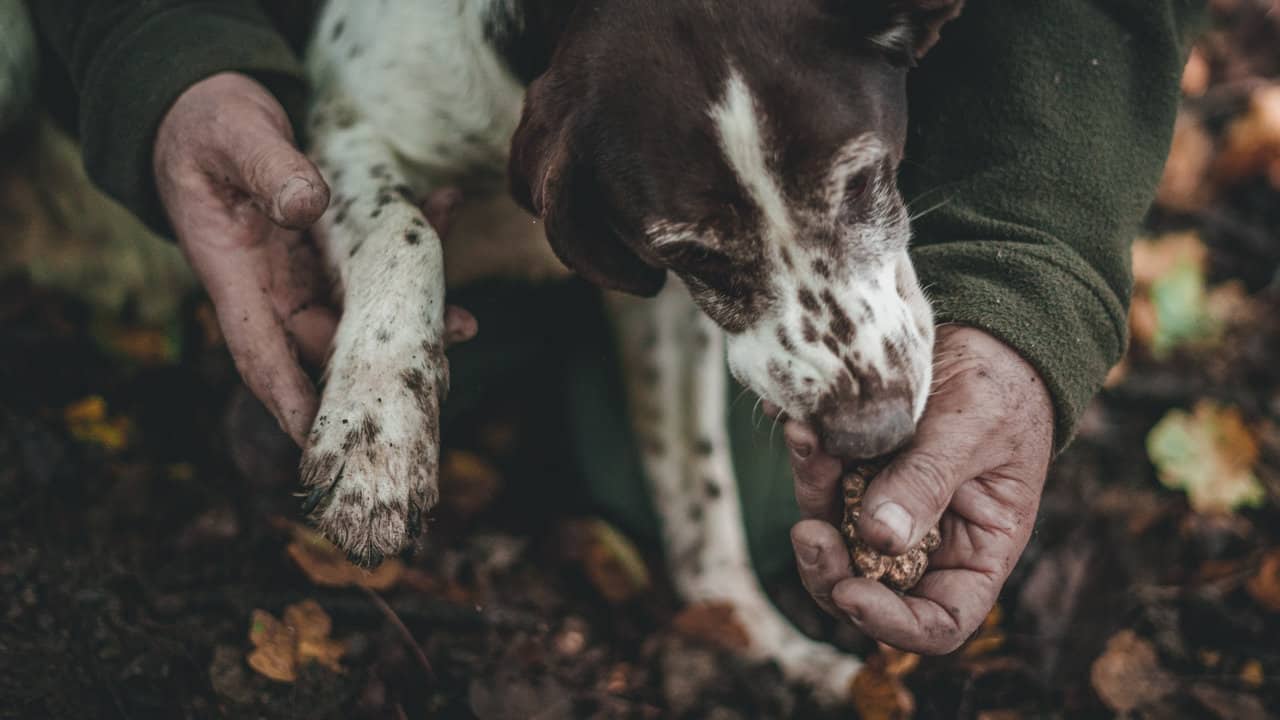
Things are only getting more and more complicated when it comes to truffles, as you will have to keep in mind the fact that you can never tell a hundred percent whether they are ready to be dug up yet or not.
We recommend using a trained truffle dog in order to get the job done properly, although you could also just check for yourself whether they are ripe or not by just digging at the base of the tree to see its roots.
Here is where truffles are usually found, so if you’ve successfully dug up the base of the tree and you have nothing to show for it then you should know that this means that the truffles never matured so you couldn’t harvest them properly.
We highly recommend that you harvest these truffles around the beginning of the winter, although we do understand the fact that digging through frozen ground is not exactly the most pleasant experience ever.
You will need to understand though that doing this will greatly increase your chances of getting your hands on a handful of truffles right off the bat. So, while more annoying, it is well worth doing it if you want to maximize your chances of getting the truffles you’ve been growing for almost 5 years now.
Conclusion
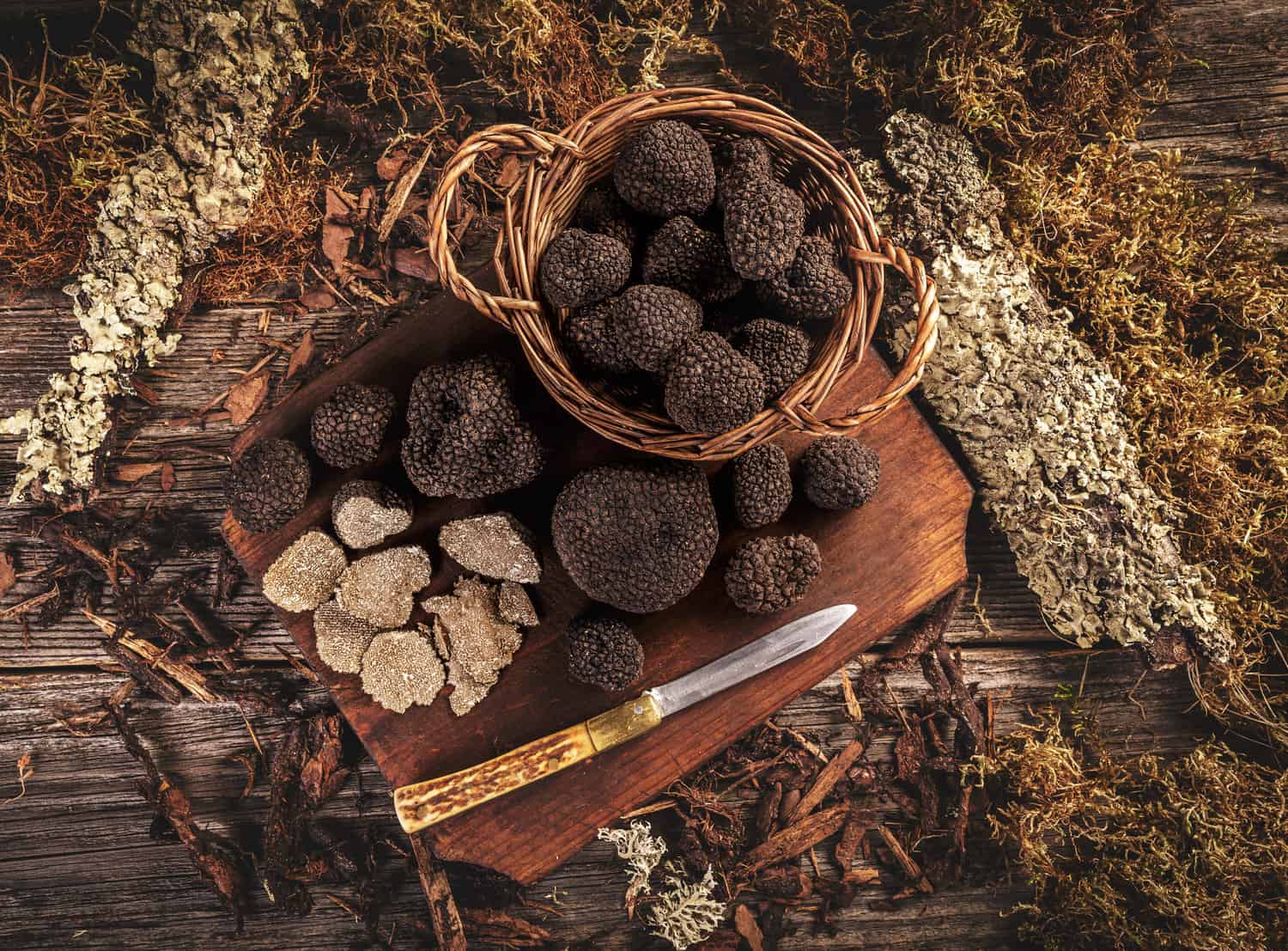
Truffles really are something special, aren’t they? They are considered to be delicacies regardless of where you come from, and while they are definitely on the expensive side, they are also well worth the investment to say the least.
So, we wish you good luck ahead and we hope that your hard work will pay off. You can really make a lot of money out of truffles, but just keep in mind the fact that truffles have a very short shell life, so you should either consume them right off the bat or sell them as soon as possible to make a profit.

